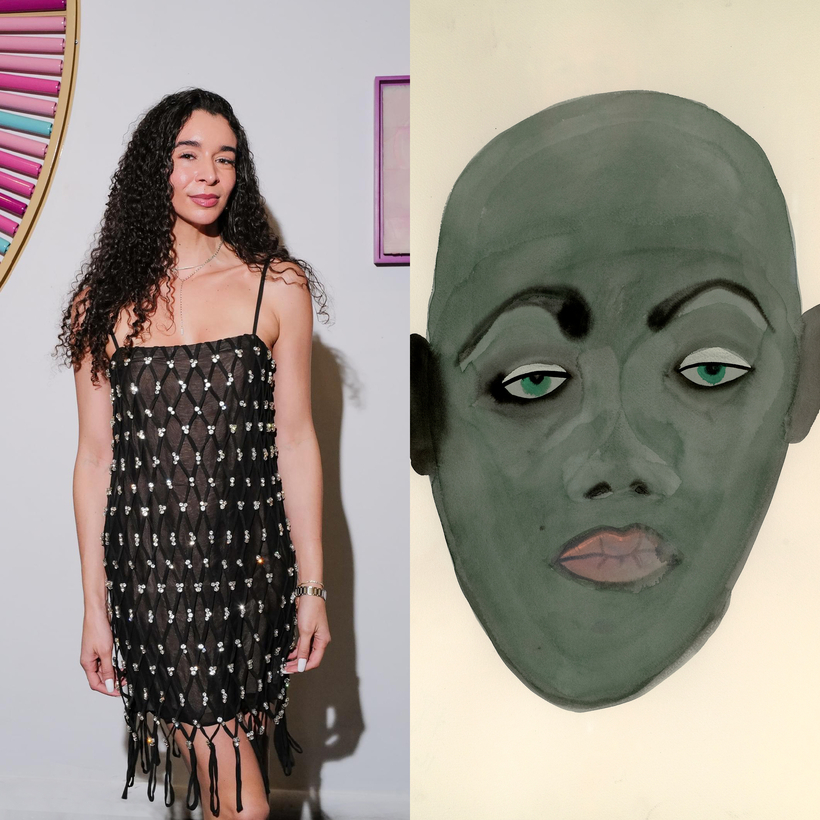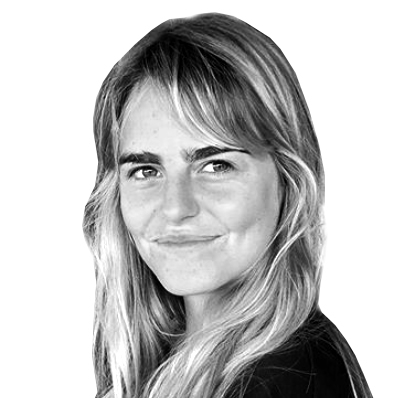Last year was another busy one for 30-year-old curator and gallerist Storm Ascher. Through her nomadic Superposition Gallery, she staged exhibitions in London, Miami, New York, Santo Domingo, and Marrakesh—showcasing both emerging and established artists.
Now, at this weekend’s Frieze Los Angeles, she’s presenting work by February James, a self-taught artist from Washington, D.C., whose ethereal, otherworldly portraits—rendered in oil pastels, watercolor, and graphite powder—delve into the archive of Black history.
Despite wildfires coming dangerously close to Ascher’s parents’ home, in Westwood, she is relieved the fair is moving forward. “A lot of the artists need this opportunity right now,” she says. “Especially after losing their studios.”

Community is at the heart of Ascher’s work. She has opted for a nomadic model for her gallery—taking on the logistical chaos that comes with it—in order to stage shows in overlooked neighborhoods, such as Los Angeles’s Little Ethiopia. This approach keeps these areas accessible to a wider audience while avoiding the gentrification that sometimes follows the opening of a trendy new gallery.
Her approach has resonated with the art world. Profiles have hailed her as a source of powerful change, and in 2022, the year she turned 28, she landed on the Forbes 30 Under 30 list.
Ascher originally dreamed of becoming a dancer. At Milken Community high school, she studied ballet and theater, until an injury forced her to change course. Unable to dance, “I started photographing our performances instead,” she says. She sold the photos after school. “That’s how I realized, Wow, you can actually have a market in the visual arts.”
In 2012, Ascher enrolled in an art-studies program at U.C. Santa Barbara. But a semester abroad in Barcelona changed everything. There, she took a class on how the 1992 Olympics—and the large-scale public artworks commissioned for the occasion—became a catalyst for gentrification.
She wrote her thesis on the subject, drawing parallels to cases closer to home, including the transformation of New York’s Chelsea neighborhood from artists’ lofts to swanky boutiques and the buzzing High Line.
Ascher transferred to the School of Visual Arts, in New York, in 2015, where she completed her degree while also getting real-world experience: she interned at the renowned David Lewis and Sprüth Magers galleries, and cut her teeth under Hamza Walker at the Los Angeles nonprofit Laxart.
At Sprüth Magers, curators encouraged her to put her social-justice ideas into practice when mounting her first show after graduation, in August of 2018. “They lent me pedestals for my first show and went over the mission statement with me,” says Ascher, who recalls being told, “Wow, we’ve never seen a gallery program’s bio say that they’re socially conscious before anything else.”

Ascher shaped Superposition Gallery’s opening show around her fellow graduates. “I put out an open call,” she says. “If artists were feeling the way I was, directly after graduation—torn in multiple directions in terms of practice, in terms of identity—apply.”
She was only 23 at the time—Black, Jewish, and, unlike most curators, lacking a master’s degree. And yet she received 1,200 applications, which she whittled down to 11. The show was a resounding success.
Since then, Ascher has expanded her pop-ups into new communities, pulling in world-renowned artists such as Derrick Adams and Sanford Biggers to attract larger audiences for the emerging artists she represents. Her roster has grown to include 50 artists, and while she still runs things mostly alone, she hires freelance assistants and shipping teams as needed.
In 2023, after learning that Long Island had historically been home to a thriving Black arts community, she launched the Hamptons Black Arts Council, staging exhibitions in the area and using some of the proceeds to support local museums.
And Ascher’s not slowing down. After Frieze Los Angeles, she’s heading to Expo Chicago, then on to the next. “We’re on the front lines of proving that there should be a market elsewhere,” says Ascher. “Let’s decentralize this idea of New York, Los Angeles, London, and Miami.”
Frieze Los Angeles runs through the weekend at Santa Monica Airport
Elena Clavarino is a Senior Editor at Air Mail


